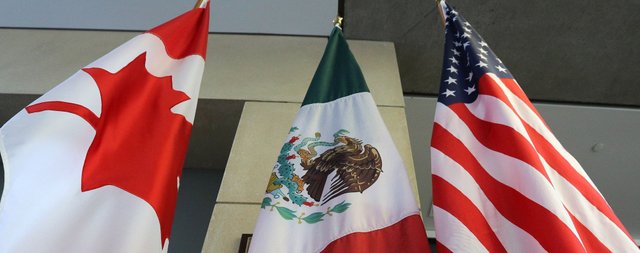The new NAFTA (or USMCA as it is now called)
So the new NAFTA got agreed between Mexico and Canada, with a new name USMCA which doesn't quite roll off the tongue.
Commentators were quick to point out that apart from the name, the changes were not earth-shaking - so was it worth all the drama and arguments (Canada is still furious at some of Trump's intemperate language).
Trump was wrong to be so rude, and it will have a long effect on Canada's ability to trust the US again (as well as encourage Canadians to start diversifying their economy away from the Americans).
But Trump did achieve his primary objective - which was to close NAFTA's loopholes that China was exploiting.
The old NAFTA simply said that at least 40% of a product's components had to be made in the US, Canada or Mexico to qualify to be tariff free within those three countries. The original authors of the agreement in 1990-1992 thought that more and more factories would get located in Mexico, tightening the labour market there and raising Mexican wages. The idea was Mexican wages would converge towards American and Canadian ones and newly rich Mexicans would then afford to be able to buy American and Canadian goods. Win-win-win.
What actually happened was that stuff was made in China and shipped to Mexico and assembled there with just enough Mexican components to qualify to be tariff free. So China was the big beneficiary. And the jobs the Mexicans got came with horrible pay freezes that the Mexicans couldn't raise, because their labour markets never tightened (thanks to China).
Under the new deal, 75% of the components of cars, trucks and autos must be made in either the US, Canada or Mexico. And 45% of that content has to be made by workers who earn at least $16 an hour by 2023.
As American and Canadian wages rise (Amazon is now going to be paying it's US warehouse staff $15 an hour, good luck getting an American auto worker to accept $16), wages in Mexico will have to rise to meet the provision. Together these two rules should boost wages in Mexico as well as boost factories there.
Mexico has also agreed to pass laws allowing workers the right to join trade unions and to extend protection to it's own migrant workers (who come from Central America).
In theory all these things should make the average Mexican wealthier and better able to afford to buy goods from Canada and the US (the original idea behind NAFTA). The election of Mexico's new left-wing president probably made it easier for the outgoing president Peña Nieto to face down objections from Mexico's factory owners.
Finally, the deal also includes a China clause. If either Canada or Mexico want to do a trade deal with China, they need to get permission from the other two partners of USMCA. The US is likely to say No to this, and that freezes China out some more.
Trump got very little in the deal from Canada - a bit more access to the Canadian dairy market, plus a 16 year sunset clause. In my opinion it wasn't worth angering the Canadians so much.
The US gained on the Intellectual Property front - copyright protection went from 50 years beyond the life of the author to 70 years beyond the life of the author, and IP protection for drugs was extended to 10 years from 8 years.
USMCA also had zero tariffs for the sale of digital goods (music, ebooks) - important as digital goods weren't included in the original NAFTA as the internet hadn't been invented then.
All in all, not a bad deal. Pity so many tempers were raised in negotiating it.
Now comes the next bit - getting it ratified.
